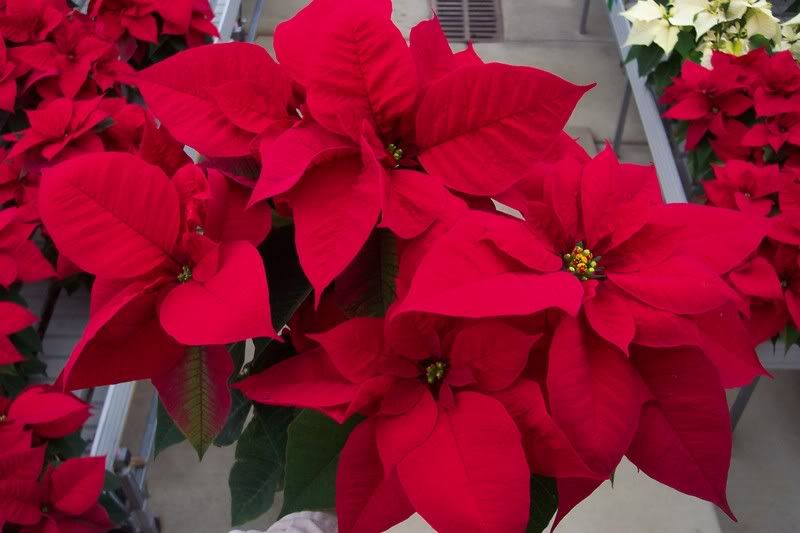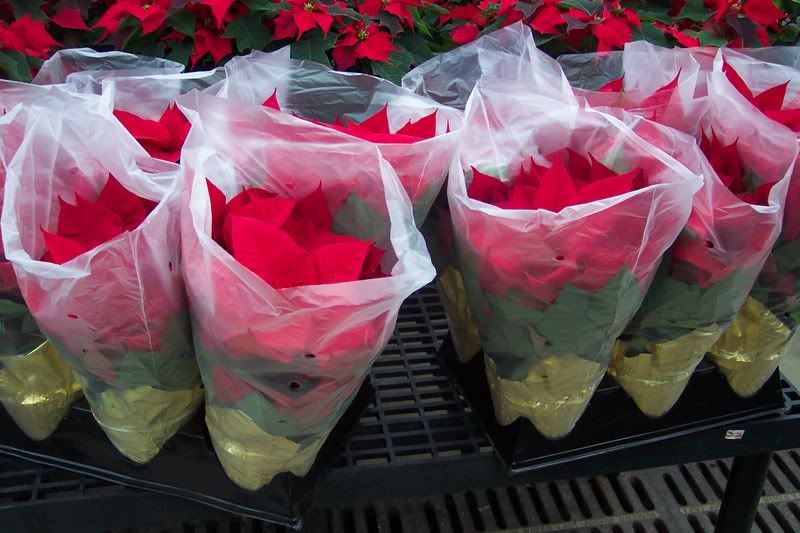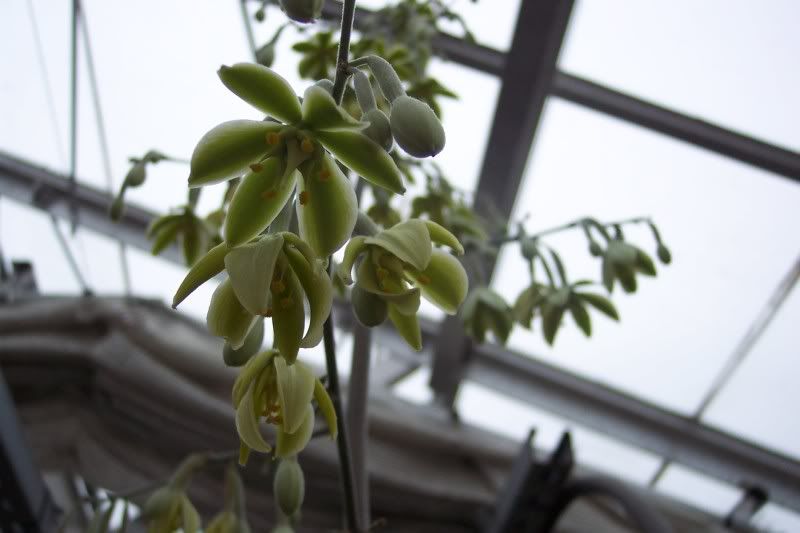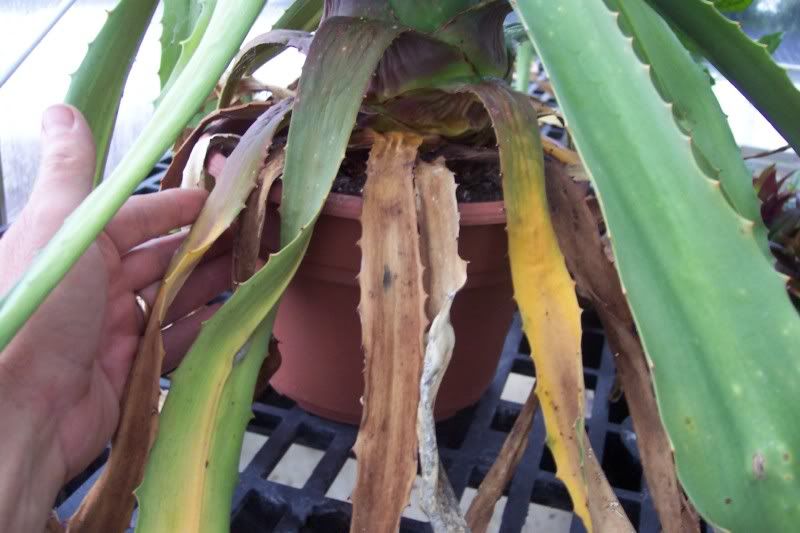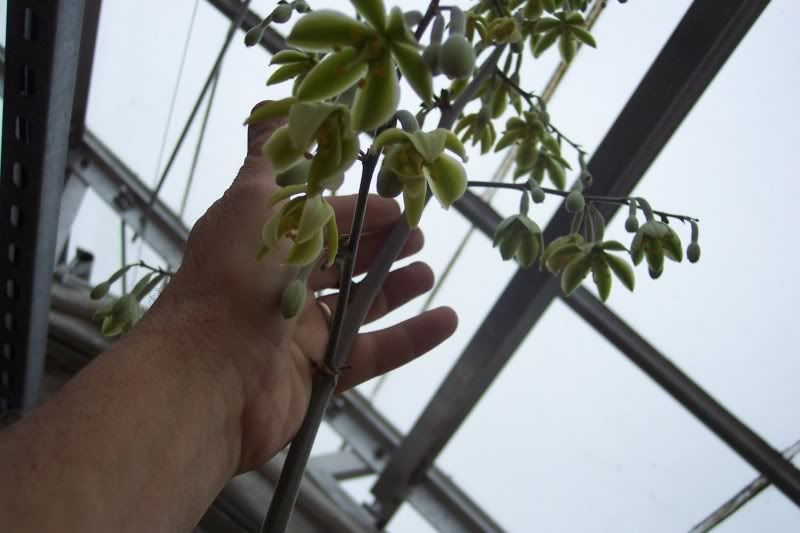One of the fun gardening projects you can do this time of the year is start your own pineapple plant. Even though most pineapples we eat are grown in Hawaii, you can actually grow a real pineapple in Michigan…for free!
Here’s how I do it.
First, you need a fresh pineapple from the produce department. Look for the freshest looking one you can find. Of course you would probably do that anyway if you were shopping for produce.
Cut the top off normally and eat the pineapple…
Now, here’s the part that is different: instead of throwing away the top, use it to start your own pineapple plant.
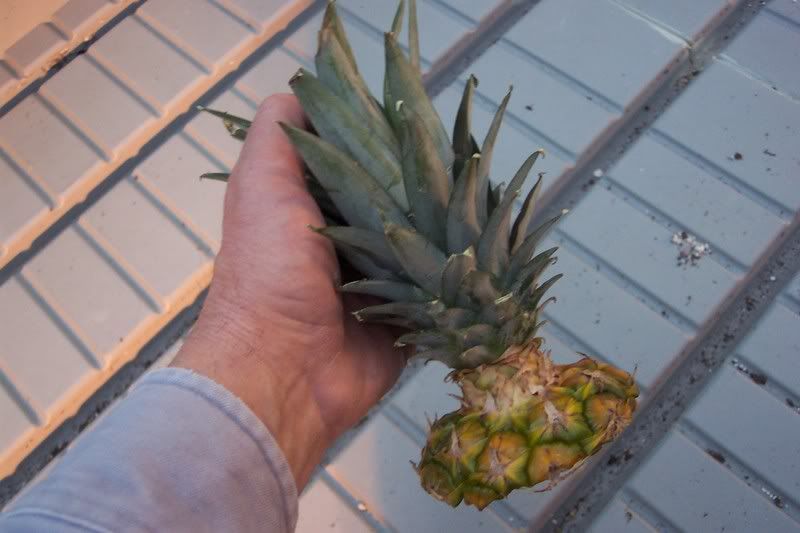
You need to prepare the top before planting by trimming away any remaining pineapple fruit, so that you end up with a top that looks like this:
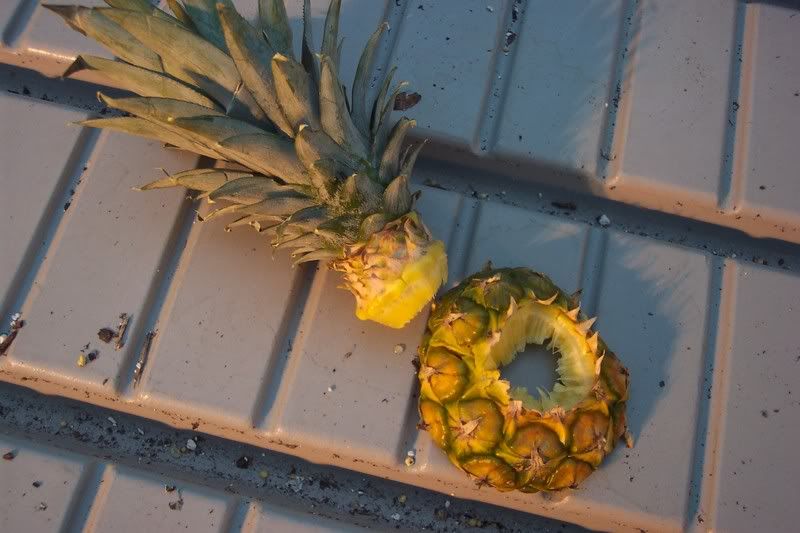
Then, pull off the lower leaves until you see some small bumps on the stalk, these will be the spot from which the new roots will grow. It will look something like this:
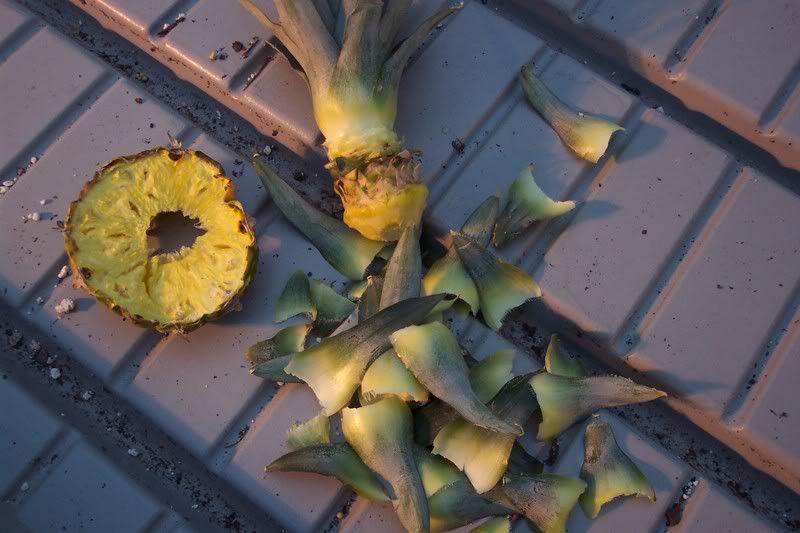
Then just place the prepared top into a pot of planting mix deep enough to cover those bumps and water it in. Place your plant where it can get some sun and water it when the soil gets somewhat dry. Fertilize it with a houseplant fertilizer as directed on the package and you should be all set.
The plant shown in this photo (on the right) has been growing for several weeks. Look at all those nice new leaves.
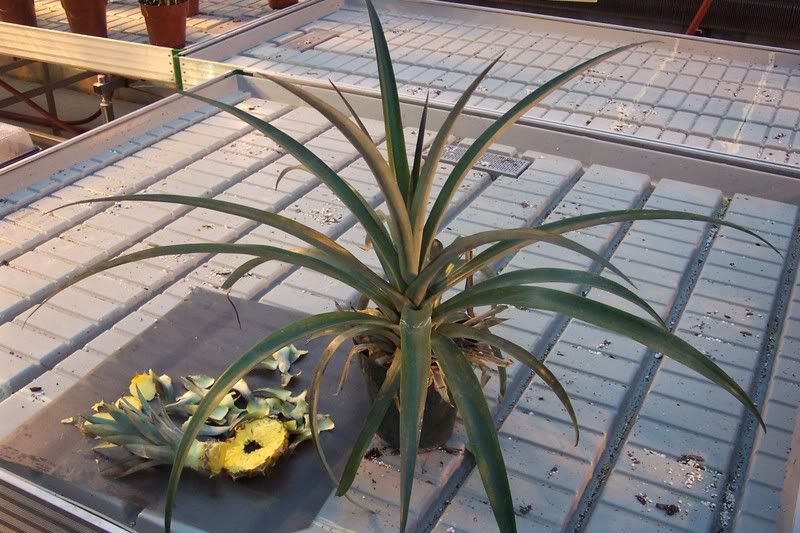
Here is that same plant several months later.
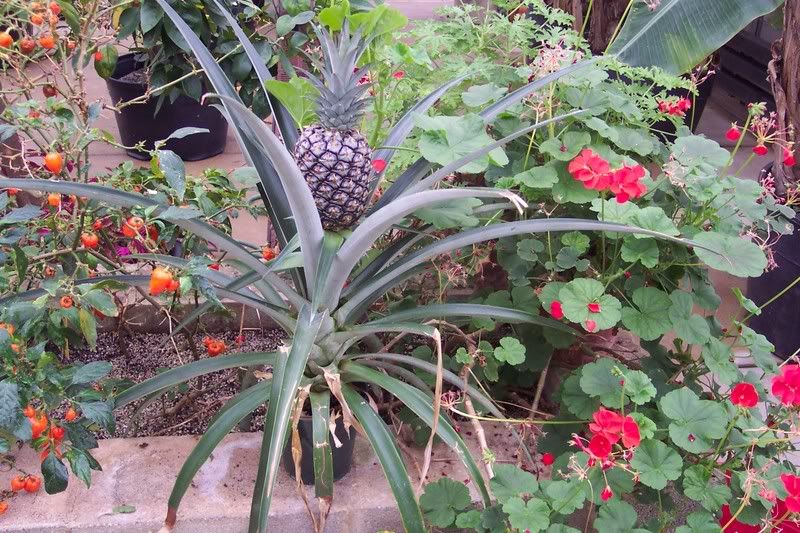
My pineapple has been growing in the same six inch pot for all that time. I would recommend that you move your plant into a larger pot as it grows.
This plant is a little over two feet tall… and has a real pineapple at the top!

As it starts to turn a little yellow, I will harvest it to eat and then start a new pineapple all over again!
Aloha,
Bob
